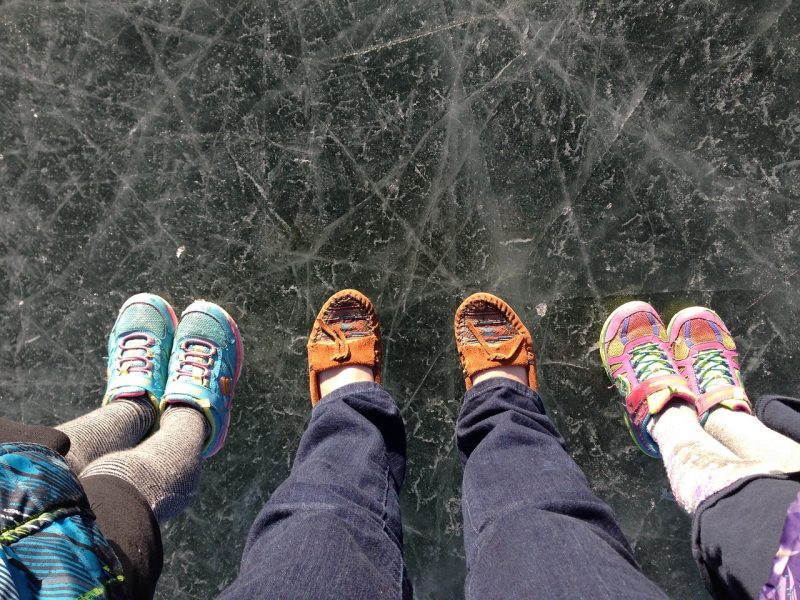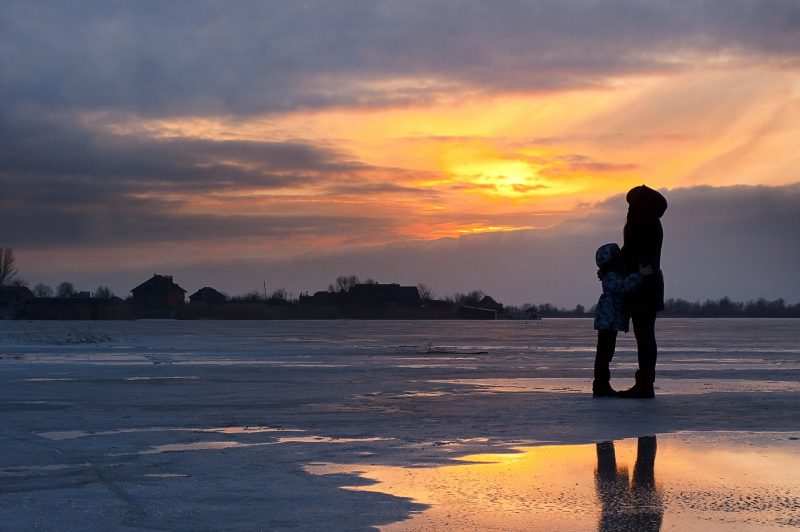Avoid breaking the ice and falling into the icy water below
Winter hiking comes with many challenges and hazards, one of the more serious being falling into icy water. If you are familiar with the territory you are walking in, you may have been able in the past to walk around without too much regard to where the bodies of water were. These could have been iced over and quite safe to walk across. But as the weather becomes a bit warmer, these iced up lakes naturally begin to thaw a bit and the ice becomes thinner and therefore less stable. Crossing lakes and streams in these circumstances may not be safe at all. So, before you set out, it may be wise to check the conditions with the local rangers regarding thin ice, loose terrain, swift water, and rock-falls.
You do not want to be falling into icy water. Not only is it very unpleasant but you may well succumb very quickly to hypothermia or frostbite. You should be aware of thin ice by observing the surroundings. Check ice very carefully before attempting to cross it. If you are unfortunate enough to fall in it is important to know what has to be done to deal with the problem.

So, to avoid the problem in the first place, look at a map of the area. The blue water markings are obviously where the ponds, lakes, and streams are. The problem is that often snow may totally cover the ice and it will be difficult to determine where the ice actually is. If you do need to cross the area and you have reason to think it may be dangerous, cross using all the skills you should have developed for making just such an ice journey.
Smooth dips in the snow could indicate frozen bodies of water; listen out for the sound of cracking of ice under your feet. You may even be able to hear water gurgling and flowing under the ice. Gullies and ravines would also indicate the possibility of water flow. Patches of trees can also be an indicator. Listen and look carefully.
Any crossing under these circumstances must be approached with great caution and as spring approaches, such endeavors become even more dangerous. Search for a place where the ice is clear and clean. Older ice tends to be less stable. The thickness of the ice needs to be determined. The limit needs to be set at about two inches. Thinner than this is potentially hazardous. It is difficult, however, as the ice does not freeze uniformly.

A trekking pole is a must. If the ice does start to break the pole will help you balance. You may need to use other tools, which are vital and should be in your gear: ice rescue claws, ice pick, and a survival knife.
If you do find yourself on thin ice and in a precarious position, get down on all fours to spread the weight of your body. It may be possible even to lie flat and pull yourself across the area to safety. If the ice does start to break it would be best to return the way you came as the ice could be thinner ahead than the ice you have already covered.

If you fall in, break off the thin ice which is ahead of you and use your trekking pole to balance and find a spot which is going to be able to hold your weight. Punch a tool like an ice pick or your knife into the ice immediately in front of you to give you something on which to pull your weight up back onto the surface. When you are back on the ice, graduate to a crawling position and move away to a place where it is safe to stand up. It is imperative that you should immediately take steps to get dry as hypothermia is dangerous, horrible, and a potential killer.
If you have any comments then please drop us a message on our Outdoor Revival Facebook page
If you have a good story to tell or blog let us know about it on our FB page, we’re also happy for article or review submissions, we’d love to hear from you.
We live in a beautiful world, get out there and enjoy it. Outdoor Revival – Reconnecting us all with the Outdoors.





